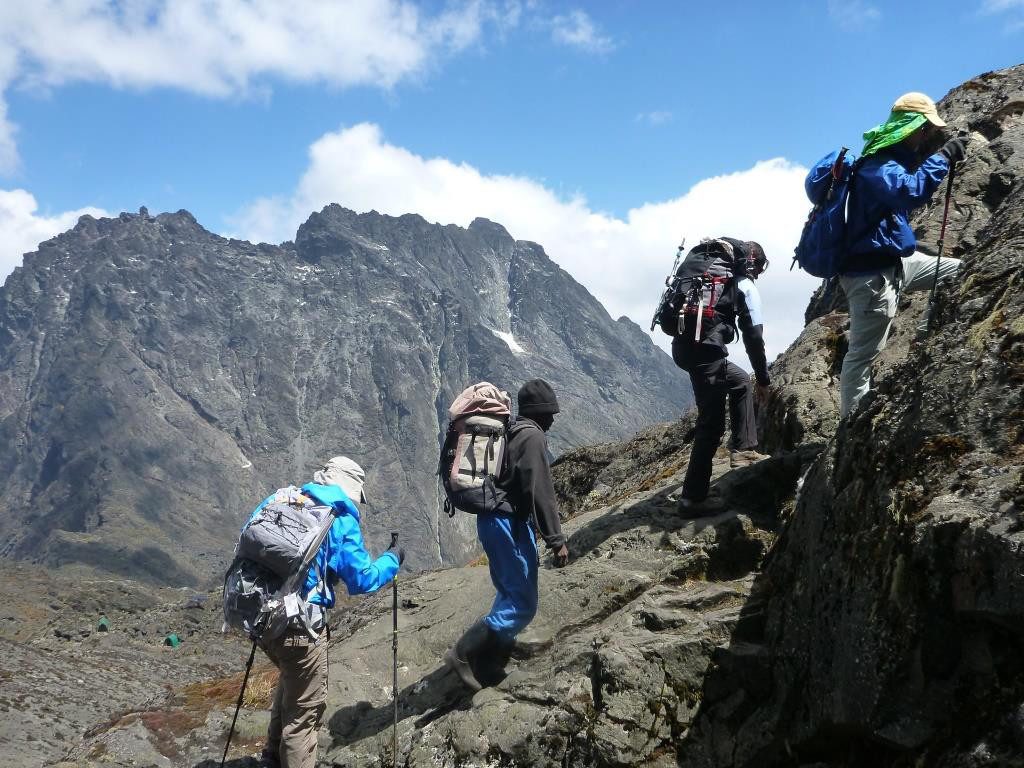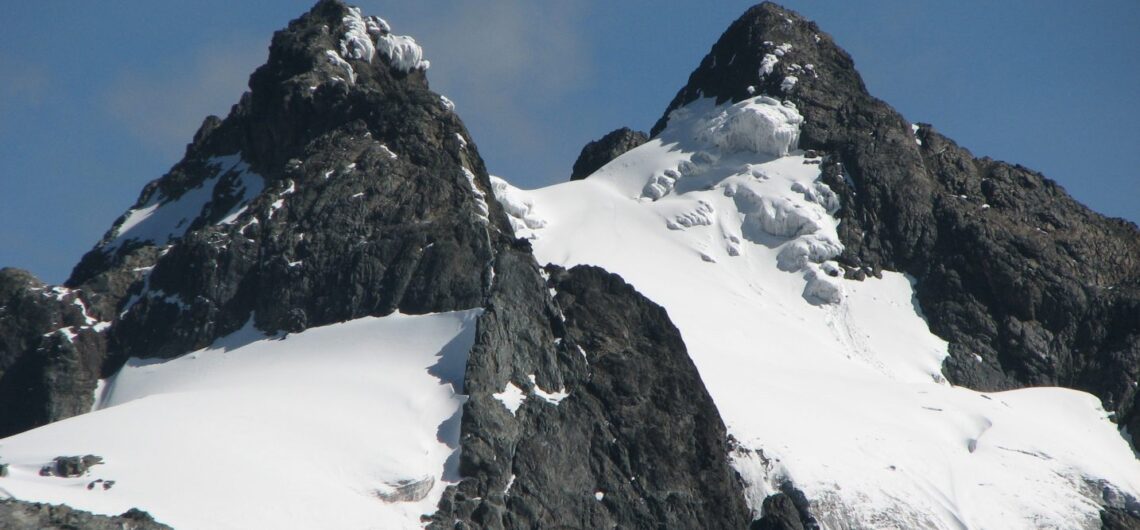Exploring the Mystical Heights: A Comprehensive Guide to Hiking Mount Rwenzori
Mount Rwenzori, also known as the “Mountains of the Moon,” is one of the most captivating hiking destinations in Africa. Located on the border between Uganda and the Democratic Republic of the Congo (DRC), the Rwenzori mountain range is the third highest in Africa, with its highest peak, Mount Stanley’s Margherita Peak, reaching an elevation of 5,109 meters (16,763 feet). The unique combination of dramatic landscapes, glaciers, flora, and fauna makes hiking the Rwenzori Mountains a once-in-a-lifetime adventure. This guide provides an in-depth look at what it means to hike Mount Rwenzori, including routes, difficulty levels, preparation, climate, wildlife, and cultural significance.

The Geography of Mount Rwenzori
The Rwenzori Mountains stretch for about 120 kilometers (75 miles) along the Uganda-DRC border. They are situated in the western part of Uganda, near the town of Kasese, and form part of the Albertine Rift, which is the western branch of the East African Rift. Its rugged peaks, deep valleys, and diverse ecosystems, ranging from tropical rainforests and bamboo forests to moorlands, alpine meadows, and glaciers, characterize this mountain range.
One of the most fascinating aspects of the Rwenzori Mountains is their glaciated peaks. Margherita Peak, located on Mount Stanley, is Africa’s third-highest peak, after Mount Kilimanjaro and Mount Kenya. The glaciers of the Rwenzori are receding due to climate change, making this one of the few places on the continent where snow and ice can be found year-round, despite its location near the equator.
The Trekking Routes
Hiking Mount Rwenzori offers multiple routes that vary in length, difficulty, and scenery. The two main routes are the Central Circuit and the Kilembe Trail. Each route has its unique features, so choosing the right one depends on your experience level, time, and preferences.
-
Central Circuit
The Central Circuit is the most popular and well-established route for hiking Mount Rwenzori. It starts at the Nyakalengija trailhead, close to the town of Kasese, and is usually a 7 to 10-day trek that loops around the central peaks of the Rwenzori range.
- Day 1: The trek begins at the park headquarters in Nyakalengija, ascending through tropical rainforests to reach the Nyabitaba Hut at an altitude of 2,652 meters. This day offers a good introduction to the lush vegetation and birdlife of the lower slopes.
- Day 2 to Day 3: The trail leads to John Matte Hut (3,414 meters), passing through bamboo forests, rivers, and heather zones. The route becomes more challenging as you ascend into higher altitudes, with muddy paths and boggy areas being a common feature.
- Day 4: Trekkers proceed to the Bujuku Hut (3,962 meters), where they get the first view of Mount Speke and Mount Stanley. This section of the trek includes navigating through the Bigo Bog, a challenging part of the trail filled with giant lobelias and groundsel.
- Day 5 to Day 7: The summit push to Margherita Peak starts from the Elena Hut (4,541 meters), involving glacier travel, rope-assisted sections, and rock scrambling. After reaching the peak, trekkers descend to Kitandara Hut and then back down the valley to complete the circuit.
The Central Circuit is considered a challenging trek suitable for experienced hikers due to its steep sections, altitude, and variable weather conditions. However, it offers some of the most spectacular views and a comprehensive experience of the diverse Rwenzori ecosystem.
-
Kilembe Trail
The Kilembe Trail is a relatively newer route that begins from the town of Kilembe, southwest of Kasese. It typically takes 8 to 10 days to complete and offers a more scenic and less crowded experience compared to the Central Circuit.
- Day 1: The trail ascends through lush forests to Sine Camp at 2,596 meters, providing an opportunity to spot blue monkeys, colobus monkeys, and various bird species.
- Day 2 to Day 3: Trekkers move up to Mutinda Camp (3,688 meters) and Bugata Camp (4,062 meters), passing through giant heathers and moss-covered landscapes. This section is known for its stunning vistas of the Mutinda Peaks.
- Summit Days: From Bugata Camp, hikers aim for the summit of Margherita Peak, with additional peaks like Weismann’s Peak and Stella Peak also accessible. The glacier on this route requires some technical skills, making it ideal for those with mountaineering experience.
The Kilembe Trail provides a more technical challenge but also rewards with less-trodden paths and quieter surroundings. The route showcases some of pristine and remote parts of the Rwenzori range.
Climate and Best Time to Hike
Mount Rwenzori’s weather is notoriously unpredictable, with frequent rainfall and cold temperatures even at lower elevations. The climate can be divided into two main seasons:
- Dry Season: The best time to hike the Rwenzori Mountains is during the dry seasons, which run from December to February and from June to August. During these months, the trails are less muddy, and visibility is generally better, although occasional rain showers can still occur.
- Wet Season: The wet seasons, from March to May and September to November, bring heavy rains that make the trails slippery, boggy, and more challenging to navigate. However, the landscape is lush and green, and fewer trekkers mean a more solitary experience.
Regardless of the season, temperatures can drop significantly at higher altitudes, particularly at night. Proper clothing, including thermal layers and rain gear, is essential to withstand the cold and wet conditions.
Flora and Fauna
The biodiversity in the Rwenzori Mountains is one of its unique attributes. The region is home to numerous endemic species of plants and animals, some of which cannot be found anywhere else in the world.
- Flora: The vegetation zones change dramatically as you ascend the mountain, starting with tropical rainforests at lower elevations, followed by bamboo and heather zones, and finally reaching the afro-alpine and moorland zones near the peaks. Giant lobelias, groundsel, and heathers dominate the higher regions, creating a surreal landscape that looks like something out of a fantasy novel.
- Fauna: The Rwenzori Mountains are home to a wide variety of wildlife, including the Rwenzori turaco, blue monkeys, colobus monkeys, chimpanzees, and forest elephants. The lower slopes are also teeming with bird species, making it a paradise for birdwatchers.
The presence of unique flora and fauna in these mountains highlights their ecological importance and the need for their conservation, as many species are under threat due to climate change and habitat loss.
Cultural Significance
The Rwenzori Mountains hold great cultural and spiritual significance for the local Bakonzo people, who consider the mountains sacred. According to their traditions, the peaks of the Rwenzori are home to gods and spirits, and they believe that the mountains play a central role in their spiritual practices.
Local communities around the Rwenzori engage in traditional agricultural practices and craft making, particularly weaving and pottery. Interaction with these communities provides trekkers with an opportunity to learn about the rich cultural heritage of the region and support local livelihoods through responsible tourism.
Preparing for the Hike
Hiking Mount Rwenzori is a demanding adventure that requires proper preparation, both physically and mentally. Here are some essential tips to help you get ready for the trek:
- Physical Fitness: Training for endurance and strength is crucial, as the trek involves long days of walking, steep ascents, and challenging conditions. Cardiovascular exercises, hiking with a backpack and strength training for the legs and core will help you prepare.
- Altitude Acclimatization: Acclimatization is important to reduce the risk of altitude sickness. Ascending slowly, staying hydrated, and spending extra days at intermediate camps can help your body adjust to the higher altitudes.
- Gear and Equipment: Essential gear includes a good-quality trekking backpack, sturdy hiking boots, thermal clothing, rain gear, gloves, hats, and sleeping bags suited for cold temperatures. Technical equipment like crampons and ice axes may be required for the glacier sections.
- Guides and Permits: All treks in the Rwenzori Mountains must be guided, and permits are required for entry into the Rwenzori Mountains National Park. Hiring a licensed guide and porter not only ensures safety but also supports the local economy.
- Hydration and Nutrition: The high-altitude conditions and physical exertion require you to stay well hydrated and nourished. Carry energy-rich snacks, drink plenty of water, and eat balanced meals to maintain your strength.
Challenges and Risks
Hiking Mount Rwenzori is not without its challenges. The terrain can be physically demanding, with muddy trails, steep ascents, and unpredictable weather. Altitude sickness is a significant risk as you climb higher, and the technical sections of the glacier require a good level of skill and experience.
It is essential to be prepared for the possibility of changing weather conditions, including rain, snow, and strong winds. Hiring an experienced guide is crucial to navigating the trails safely and making sound decisions in case of adverse weather or altitude-related issues.
Conclusion
Hiking Mount Rwenzori is a rewarding and challenging adventure that offers a unique blend of natural beauty, biodiversity, and cultural richness. From its glaciated peaks and diverse vegetation zones to its mystical significance for local communities.


Comments